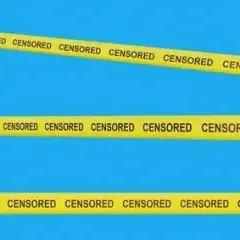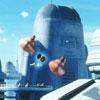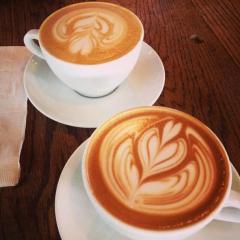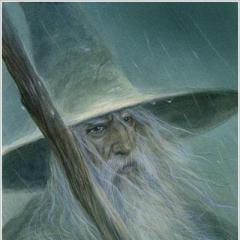Search the Community
Showing results for tags 'Yo-Yo Ma'.
-

Memoirs of a Geisha & Seven Years in Tibet Remastered
Jurassic Shark posted a topic in JOHN WILLIAMS
I'm filling some gaps in my collection: Seven Years in Tibet and Memoirs of a Geisha. These recordings were remastered when the lavish box of Yo-Yo Ma's complete Sony recordings came out, and in 2015 they were released on single discs. As we all know it varies how successful remasters are. Has anyone compared them with the original releases?- 71 replies
-
- Seven Years in Tibet
- Memoirs of a Geisha
-
(and 2 more)
Tagged with:
-
- 17 replies
-
- Memoirs of a Geisha
- Itzhak Perlman
-
(and 1 more)
Tagged with:
-
I just came home and turned on my computer, checked my email, and saw a note that the Houston Symphony's announcement of their 13-14 season was being webcast. Clicked on the link, and the second the video loaded, the first thing I saw was a big picture of John Williams and heard them saying that he is coming HIMSELF and conducting here and Yo-Yo Ma too (I think Cello Concerto) and they are also doing film scores and there will be a MEET & GREET afterward. O.M.G. I thought I had fallen into an alternate universe and had to pinch myself. Next year is the Symphony's 100th anniversary, so there are a lot of awesome things happening. Right after they announced the JW concert, was mention of a performance of Mahler 8 with Eschenbach, which they are building a special stage extension for. And apparently John Adams is coming as well to conduct his new piece CIty Noir. And also, they have just named a new conductor who looks a lot like Gustavo Dudamel of the LA Phil. This is all the info I know now on the JW concert, they don't even have the season brochure or concert listings up yet. Linkage: http://www.houstonsymphony.org The very second I hear you can buy tickets, I'm in! Who else is! I live here now (I work at the Museum of Natural Science), so I would also be up for organizing whatever get-together etc. we would like to do. Oh also - hello my beloved JWFan, yes I have been away too long, but I do lurk still! ~g
-
Memoirs of a Geisha Review of the Soundtrack Album by Mikko Ojala Memoirs of a Geisha is based on the popular bestseller of Arthur Golden which was in 2005 adapted into a motion picture directed by Rob Marshall of the Chicago fame. The movie features a singular, more introspective score by John Williams which differs from most of his blockbuster fare in its restrained style yet plays a significant role in the film itself, where the music is often spotlighted perhaps due to Rob Marshall's background in musicals. The composer mentioned in several interviews that for this assignment he studied more the Japanese instruments than he did the Japanese music, especially how would these instruments enhance and blend with the Western orchestra and would give a certain ethnic colouring to it without dominating the soundtrack and make it too alien to the Western ears. There is a lot of atmosphere and ethnical touches on the soundtrack to emphasize the locale, time and place but to make it accessible to the audiences it is presented in Western orchestral idiom with the cello taking center stage. Williams was impressed with the book and immediately thought of cello to portray the character of Sayuri, of course not knowing that he would be scoring the film at any point. He knew that Spielberg had acquired the rights to the novel so there was an inkling of it being made into a film. Williams also thought of Yo-Yo Ma from the beginning, actually sending the book to him and talking to him about the possibility of scoring the film and the idea of cello. And later when the film was announced Williams did what by his own words he has done never before: He actively sought to score the film, asked for the assignment. This certainly shows how inspired and impressed Williams was by the story. The movie is very colourful and theatrical portrayal of Japanese culture, more an illusion than real. In other words it is pure Hollywood. The music has a large role in it, almost another character in the storytelling, an integral part of the drama. The film has several of what could be called musical numbers, Becoming a Geisha being the most prominent, so the music is allowed to shine throughout the film. But Williams' music even though it has a large part in the film, is not bombastic or overly lush. I think more than anything it is introspective and subtle, lyrical and delicate with a lot of underlying subtext both psychological and poetic. Most of all it is a portrayal of a society and culture. Hence it is restrained and subtle. I can't say to be an expert on Japanese culture and customs but I know that they are a reserved people and put a lot of emphasis on public appearance and honor. Public outbursts of big emotions is not part of their culture. I think the music follows this idea throughout. There is emotion in it but it is mostly not in Hollywood proportions. You have to read it more carefully. Often the emotion is tied to the instrumental solos, carrying all the unsaid and unexpressed in their timbre and voice. Only at the end of the movie the music blooms into larger than life emotion on the track Confluence where both of Sayuri's themes are performed in a grand manner offering an emotional closure as Sayuri and the Chairman are finally reunited, finally expressing their true feelings openly. Williams had as a starting point the cello as the voice of Sayuri's character. Cello that has a soulful and warm sound is indeed ideal to portray this young woman's journey through life and Yo-Yo Ma's expertise and artistry brings her alive in music in a way I do not think would have been possible with any other artist. The counterpoint to Sayuri's cello is the violin played to perfection by Itzhak Perlman that portrays the character of the Chairman. Both artists elevate the music with their playing immensely. These are really the two main components of the score. Oboe could be added to this instrumental group as it has a prominent role in the music as well being a lyrical and ruminating, showing perhaps Williams' attempt to capture some of those qualities he sees in Japanese culture. Thematically as instrumentally the music is built on Sayuri's theme and Chairman's theme. Sayuri has 2 different themes associated with her: Chiyo's theme, the musical identification of the young girl before she becomes a geisha, that could be called the real Sayuri's theme, depiction of the real person under the guise of the geisha (Journey to the Hanamachi 2;41-3;13, Confluence and finally A Dream Discarded which is a sort of deconstruction of the theme on cello. End Credits contains subtle interpolation of this theme in flute and chimes 1;36-1;53). And then there is the more prominent Sayuri's theme, the actual musical depiction of the geisha that can be heard throughout the soundtrack. Both themes are lyrical, Chiyo's music showing more fragile image of a young girl than Sayuri's theme that is elegant and mature but no less soulful. Cello is omnipresent in scenes involving Sayuri and many tracks containing cello solos involve her and inform us of her state of mind with beautiful and lyrical solo lines. The Chairman's Waltz is heavily European, even Slavonic in its style and contains a clear melodic line with very little decorative violin work that it might have gotten if not for the character's nature. The Chairman is reserved and nearly paternal at first in his encounters with Chiyo so the music is reserved, elegant, cultured, hinting of Western civilization as if to show how the Japanese of that day and age might have admired the European culture. It could be seen to depict Chiyo's idolized view of the Chairman as a citizen of the world, sophisticated and cultured. And as the music is strongly melancholic, described by Williams as valse triste, it could also hint at Chiyo's sadness for noticing how the Chairman does not return her affection (even if that is not the truth but this man does not show it publicly). Williams transforms this theme into an introspective elegy for solo oboe, harp and two celli in As the Water... where the waltz time is kept by the pizzicato celli and after the oboe solo the duo plays a deconstructed version of the waltz. This music marks both the passage of time in the film as well as Sayuri's sorrow of being separated from the Chairman. These two character portrayals are accompanied by several musical devices and shorter motifs that are associated with fate and destiny referenced clearly in the film. Williams has cleverly constructed highly symbolical and powerful yet simple and direct and they seem take their inspiration from water, also a prominent symbol in the film, a river, flow of destiny and the current of fate. There is a constant forward momentum in the music depicting the irrevocable flow of both time and fate of Sayuri/Chiyo or they are used in important moments in the story to note the changes of fate.This idea of water or flow of water/destiny can be heard in the music throughout from the constant motoric string figures accompanying Sayuri's theme to the End Credits. Most prominent of these destiny/water motifs is heard on the track Chiyo's Prayer 0;32-> in the accompanying strings, 3;03-> on solo cello, Finding Satsu 2;31-2;52 and Fire Scene and the Coming of War 4;31-> accompanying the Chairman's theme. There is the constant arpeggio-like up-and-down motion to it, usually voiced by strings, like a current that is carrying the main character forward on her path. Another motif associated with fate appears in Finding Satsu 0;05-0;40, and again in A New Name...A New Life 0;10-0;34 in a fuller guise and again at the end of the track 2;31-2;54. Even the Rooftops of Hanamachi contains a subtle quote of this motif as Sayuri tries to escape over the rooftops and her destiny and fate are uncertain (small portion of the motif is quoted 3;03-3;15). More of a self contained continuation of this water/destiny idea is the Destiny's Path track with the constant motion in the music without major thematic material. Williams also composed a good amount of singular set piece material for different scenes that enhances more the mood and ethnic flavour than adds to the thematic palette. Going to School, Brush On Silk, Dr. Crab's Prize, Rooftops of Hanamachi all add more authentic Japanese instruments to the orchestral palette and enhance the mood of the scenes. They add colour and variety to the music and give it a more Japanese flavour and reportedly Williams worked extensively with the soloists to integrate their sounds and range and timbres to the Western orchestral palette. He usually utilizes these instrumental colours with a ghosting effect from the regular orchestral instruments, e.g. with koto he has the concert harp ghosting the plucked sounds, creating an enhanced effect, which rings full and is subtly both familiar and exotic. E.g. Becoming a Geisha contains between the developments of Sayuri's theme a percussive interlude that not only adds ethnic flavour but in Williams' own words denotes almost a some sort of sacrifice taking place, the young girl being transformed into a geisha, losing her former life and identity in the process. This is a score you have to pay close attention to. You have to find the emotional core of this score from the soloist performances which are at center of this music rather than from bold and big performances of the themes, which are well integrated and stated throughout but certainly more restrained than in many Williams scores. There is an introspective atmosphere to this score but it is also an extremely beautiful and layered and nuanced, worth the time you invest in it. -Mikko Ojala-
- 2 replies
-
- Score
- John Williams
- (and 6 more)




